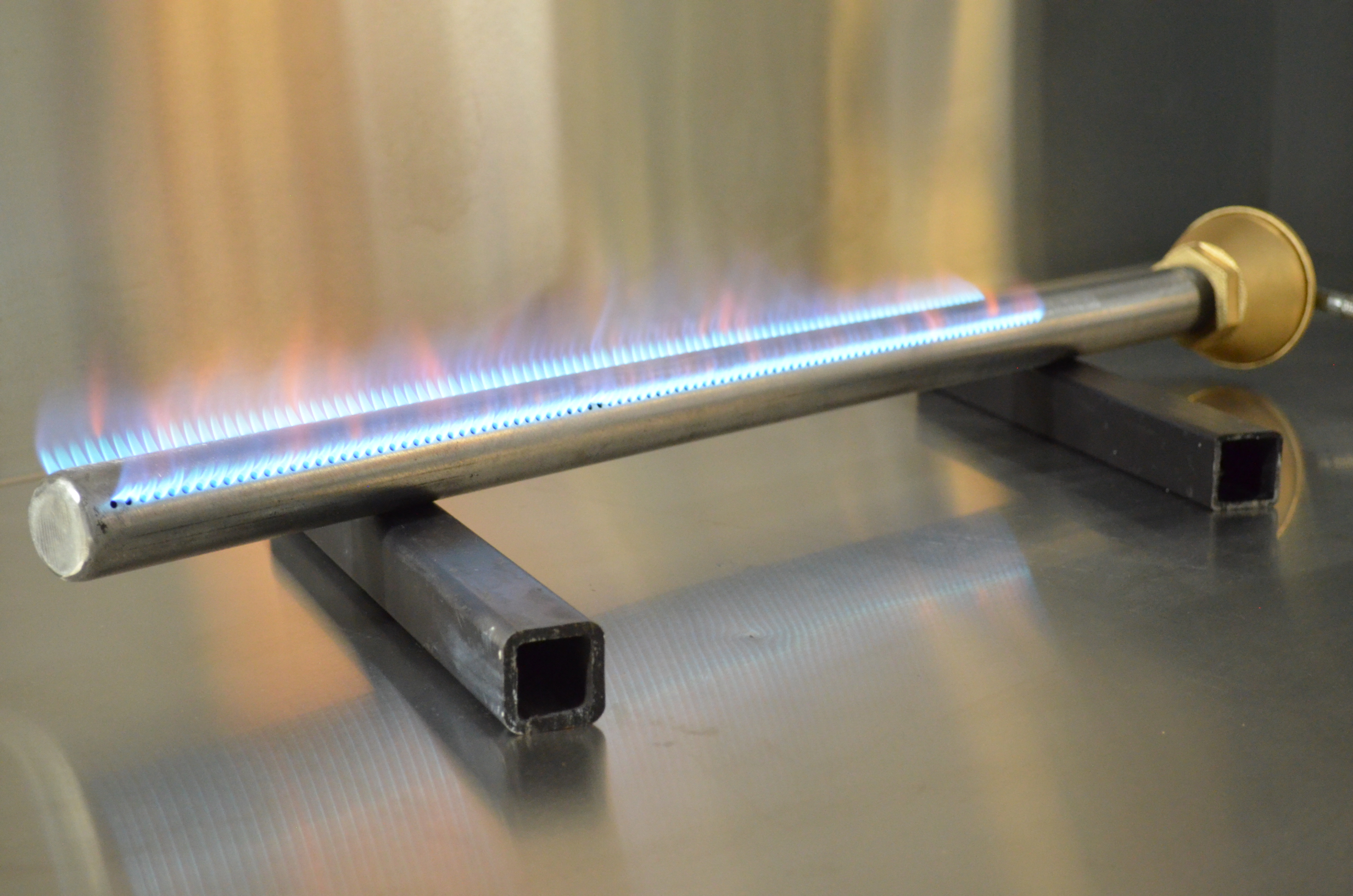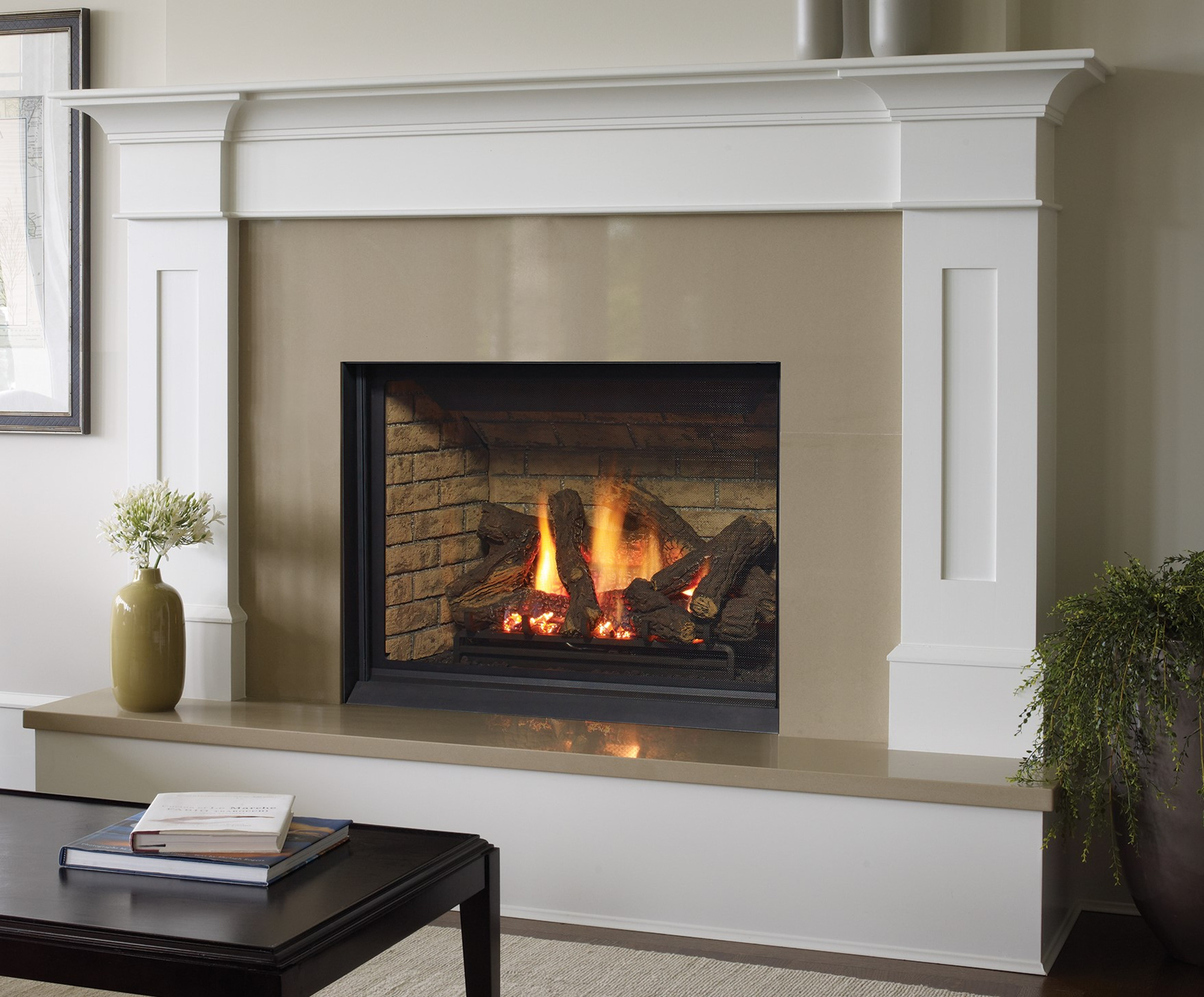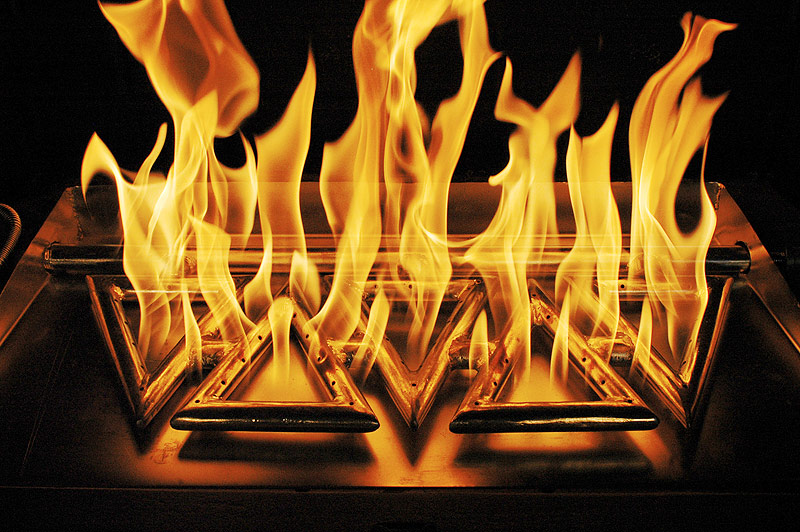Burner Pipe For Gas Fireplace

Natural gas fireplaces offer a cozy ambiance and supplemental heating, but did you know that optimizing your burner pipe could significantly impact your energy bill and environmental footprint? This seemingly small component plays a crucial role in efficient gas combustion, and understanding its function, potential issues, and upgrade options is key to maximizing your fireplace's performance and reducing energy waste.
Understanding the Burner Pipe: The Heart of Your Gas Fireplace
The burner pipe is the backbone of your gas fireplace, responsible for distributing the gas evenly across the firebox. It's typically constructed of metal, often steel or stainless steel, and features precisely engineered ports or slots. When the gas valve opens, natural gas or propane flows through the burner pipe, exiting through these ports, where it mixes with air and ignites to produce the flame.
How It Works: A Symphony of Gas and Air
The design of the burner pipe is critical for achieving complete combustion. A well-designed burner pipe ensures proper air-to-fuel mixture, leading to a clean and efficient burn. Incomplete combustion, on the other hand, results in wasted fuel, reduced heat output, and the production of harmful byproducts like carbon monoxide. Older or poorly maintained burner pipes are prime suspects in cases of inefficient gas fireplace operation.
Types of Burner Pipes: Matching the Right Pipe to Your Fireplace
Burner pipes come in various shapes and sizes, tailored to different fireplace models and fuel types. Common types include:
- Linear Burner Pipes: These are straight pipes, often used in modern, linear fireplaces. They create a long, continuous flame.
- Ribbon Burner Pipes: These feature a narrow ribbon of flame, creating a more decorative effect.
- Log Set Burner Pipes: These are designed to mimic the look of a wood-burning fireplace, often with multiple burner sections arranged to create a realistic flame pattern around the artificial logs.
- Vented vs. Vent-Free Burner Pipes: The type of venting system determines the burner pipe design. Vented fireplaces require a flue to expel combustion gases, while vent-free fireplaces have specially designed burner pipes that ensure complete combustion, minimizing emissions.
Selecting the correct burner pipe for your fireplace is crucial. Consult your fireplace's manual or a qualified HVAC technician to ensure compatibility.
Troubleshooting Burner Pipe Issues: Signs of Inefficiency
Several signs can indicate that your burner pipe is not functioning optimally:
- Yellow or Orange Flames: Healthy gas flames should be blue with a slight yellow tip. Predominantly yellow or orange flames indicate incomplete combustion, usually due to insufficient air supply or a dirty burner pipe.
- Soot Buildup: Excessive soot accumulation on the fireplace glass or surrounding surfaces is a clear sign of incomplete combustion.
- Strange Odors: A strong, unusual odor, especially a chemical or gas-like smell, can indicate a gas leak or incomplete combustion. Immediately shut off the gas supply and contact a qualified technician.
- Uneven Flame Distribution: If the flame is not evenly distributed across the burner pipe, it may be clogged or damaged.
- Reduced Heat Output: A noticeable decrease in heat output can be a symptom of an inefficient burner pipe.
- Pilot Light Problems: Recurring issues with the pilot light going out could indicate a problem with the gas supply to the burner pipe.
Causes of Burner Pipe Problems: Dirt, Corrosion, and Wear and Tear
Burner pipes are susceptible to several issues that can affect their performance:
- Dust and Debris: Dust, pet hair, and other debris can accumulate in the burner pipe's ports, obstructing the gas flow and disrupting the air-to-fuel mixture.
- Corrosion: Over time, corrosion can damage the burner pipe, especially in humid environments.
- Physical Damage: Accidental impacts or improper cleaning can damage the burner pipe.
- Improper Installation: Incorrectly installed burner pipes can lead to gas leaks and inefficient combustion.
Cleaning and Maintenance: Keeping Your Burner Pipe in Top Shape
Regular cleaning and maintenance are essential for ensuring optimal burner pipe performance and extending its lifespan. Always shut off the gas supply before performing any maintenance.
Here's a step-by-step guide to cleaning your burner pipe:
- Turn off the gas supply: Locate the gas shut-off valve near the fireplace and turn it off.
- Allow the fireplace to cool: Ensure the fireplace is completely cool before proceeding.
- Remove the logs and glass panel: Carefully remove the artificial logs and glass panel, following the manufacturer's instructions.
- Vacuum the firebox: Use a vacuum cleaner with a brush attachment to remove any loose dust and debris from the firebox.
- Clean the burner pipe: Use a soft brush or pipe cleaner to gently remove any dust or debris from the burner pipe's ports. Avoid using abrasive cleaners, as they can damage the pipe.
- Inspect the burner pipe: Check for any signs of corrosion, damage, or wear.
- Reassemble the fireplace: Carefully reassemble the fireplace, ensuring the logs and glass panel are properly positioned.
- Turn on the gas supply: Slowly turn on the gas supply and check for any gas leaks using a soapy water solution. If you detect any leaks, immediately shut off the gas supply and contact a qualified technician.
Frequency: Clean your burner pipe at least once a year, or more frequently if you notice any signs of inefficiency.
Upgrading Your Burner Pipe: Boosting Efficiency and Performance
In some cases, cleaning may not be enough to restore your burner pipe's performance. Upgrading to a newer, more efficient burner pipe can offer several benefits:
- Improved Combustion Efficiency: Modern burner pipes are designed for optimal air-to-fuel mixture, leading to more complete combustion and reduced energy waste.
- Increased Heat Output: A more efficient burner pipe can deliver more heat, allowing you to lower your thermostat and save on heating costs.
- Reduced Emissions: Upgrading to a newer burner pipe can help reduce harmful emissions, improving air quality.
- Enhanced Aesthetics: Newer burner pipes often feature more sophisticated designs, creating a more visually appealing flame pattern.
Choosing the Right Upgrade: Factors to Consider
When selecting a replacement burner pipe, consider the following factors:
- Compatibility: Ensure the new burner pipe is compatible with your fireplace model and fuel type.
- Efficiency Rating: Look for burner pipes with a high efficiency rating.
- Material: Choose a burner pipe made of durable, corrosion-resistant materials like stainless steel.
- Warranty: Opt for a burner pipe with a good warranty.
The ROI of Upgrading: Energy Savings and Rebates
The initial cost of upgrading your burner pipe can be offset by the long-term energy savings. A more efficient burner pipe can reduce your gas consumption, leading to lower monthly bills. Moreover, many utility companies offer rebates and incentives for upgrading to energy-efficient appliances, including gas fireplaces. Check with your local utility company to see if any rebates are available.
For example, replacing an older, inefficient burner pipe with a new Energy Star certified model could reduce your gas consumption by 10-20%, translating to significant savings over the lifespan of the fireplace. Calculate your potential savings using online energy calculators and consult with an HVAC professional to determine the best upgrade option for your needs.
Smart HVAC Integration: Connecting Your Fireplace to the Future
Integrating your gas fireplace with a smart thermostat and sensors can further enhance its efficiency and convenience. Smart thermostats allow you to remotely control your fireplace, set schedules, and monitor energy consumption. Smart sensors can detect room temperature and occupancy, automatically adjusting the fireplace's settings to optimize comfort and energy savings.
For example, you can program your smart thermostat to automatically turn off the fireplace when the room reaches a certain temperature, preventing overheating and wasting energy. You can also use occupancy sensors to automatically turn on the fireplace when someone enters the room, providing instant warmth and comfort.
Combining a high-efficiency burner pipe with smart HVAC integration can create a truly energy-efficient and convenient heating solution for your home or business.
Finding a Qualified HVAC Technician: Ensuring Proper Installation and Maintenance
While some burner pipe cleaning and maintenance tasks can be performed DIY, it's essential to hire a qualified HVAC technician for more complex repairs or installations. A qualified technician has the knowledge, skills, and tools to properly diagnose and address any burner pipe issues. They can also ensure that the new burner pipe is installed correctly and that your fireplace is operating safely and efficiently.
When selecting an HVAC technician, look for someone who is licensed, insured, and experienced in working with gas fireplaces. Ask for references and check online reviews to ensure they have a good reputation. A reputable technician will provide a written estimate before starting any work and will explain the repair or installation process in detail.
Remember: Working with natural gas can be dangerous. Always prioritize safety and consult with a qualified professional when in doubt.
By understanding the function of your burner pipe, addressing potential issues promptly, and considering upgrade options, you can maximize your gas fireplace's efficiency, reduce your energy bills, and create a more sustainable home or business. Embrace smart HVAC integration and partner with a qualified HVAC technician to ensure your fireplace operates safely and efficiently for years to come.










